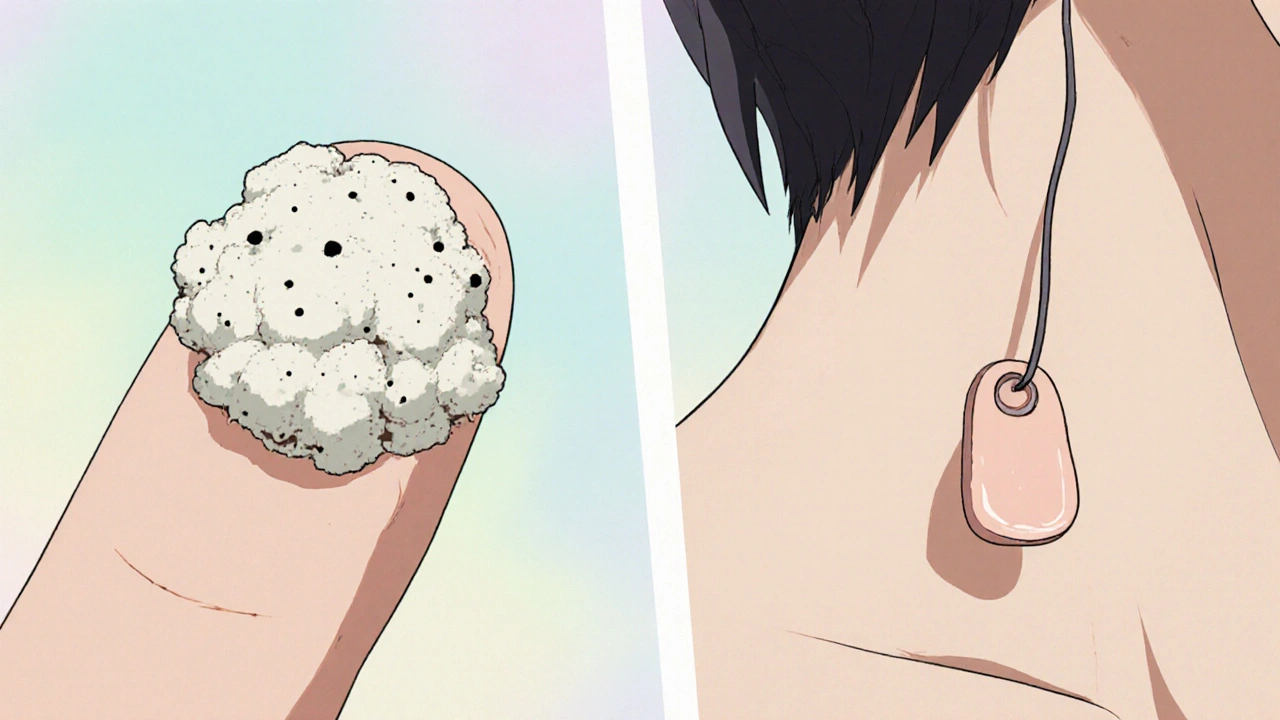Skin Tags: What They Are, Why They Form, and What You Can Do
When you notice a tiny, soft bump hanging off your skin—maybe near your neck, under your arm, or on your eyelid—it’s probably a skin tag, a small, noncancerous growth of skin that hangs off the body on a thin stalk. Also known as acrochordon, it’s not dangerous, but it can be annoying, especially when it catches on jewelry or clothing. About 46% of adults develop at least one in their lifetime, and they’re more common as you get older, if you’re overweight, or if you have diabetes.
Skin tags aren’t caused by viruses like warts, and they don’t spread. They form where skin rubs against skin or clothing—think armpits, groin, neck folds, or under the breasts. People with insulin resistance or hormonal shifts (like during pregnancy) are more likely to get them. They’re made of collagen fibers, blood vessels, and a bit of skin, all wrapped in a thin outer layer. Unlike moles or warts, they don’t change color or grow quickly. If one starts bleeding, itching, or changing shape, see a doctor—but most? They’re just there.
Many people want them gone for comfort or cosmetic reasons. You don’t need to remove them unless they bother you. Some try home remedies like tea tree oil or string tying, but these aren’t proven and can cause irritation or infection. The safest options are done by a dermatologist: snipping with sterile scissors, freezing with liquid nitrogen, or burning them off with electrosurgery. These are quick, low-risk, and usually covered by insurance if the tag is causing physical discomfort.
What you won’t find in most online guides is how often skin tags are mistaken for other things—like seborrheic keratoses, which look similar but are thicker and rougher, or early skin cancers. That’s why knowing the difference matters. Skin tags are smooth and soft. If it’s hard, raised, or has an uneven edge, get it checked. And if you suddenly get a bunch of them, it might be worth checking your blood sugar. There’s a real link between skin tags and metabolic health.
The posts below cover what you need to know without the fluff. You’ll find comparisons of topical treatments that actually work, guidance on when to see a doctor versus when to ignore it, and even how certain medications might influence skin growths. Whether you’re dealing with one tag or dozens, this collection gives you clear, no-nonsense facts—not myths, not ads, just what the science says.

Warts vs Skin Tags: Quick Guide to Identify and Treat
Learn how to tell warts apart from skin tags, understand causes, spot visual cues, and choose the right treatment in this detailed guide.
More Detail